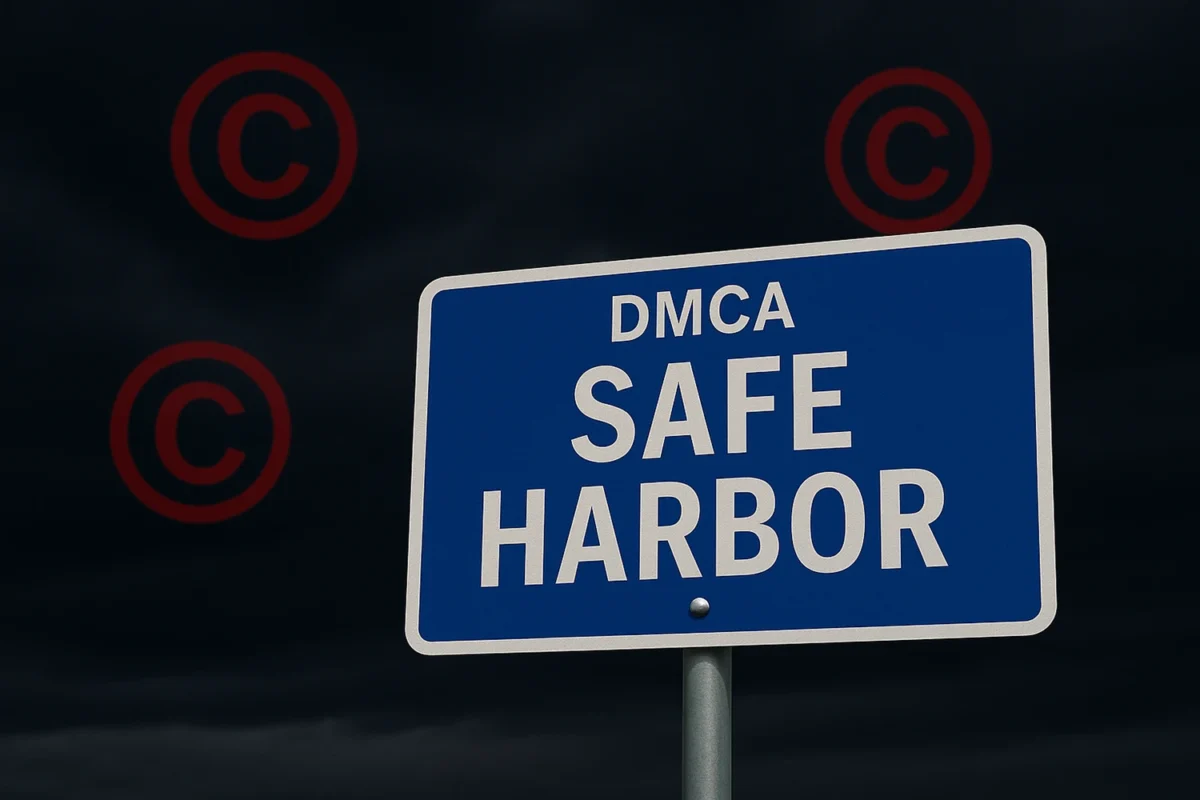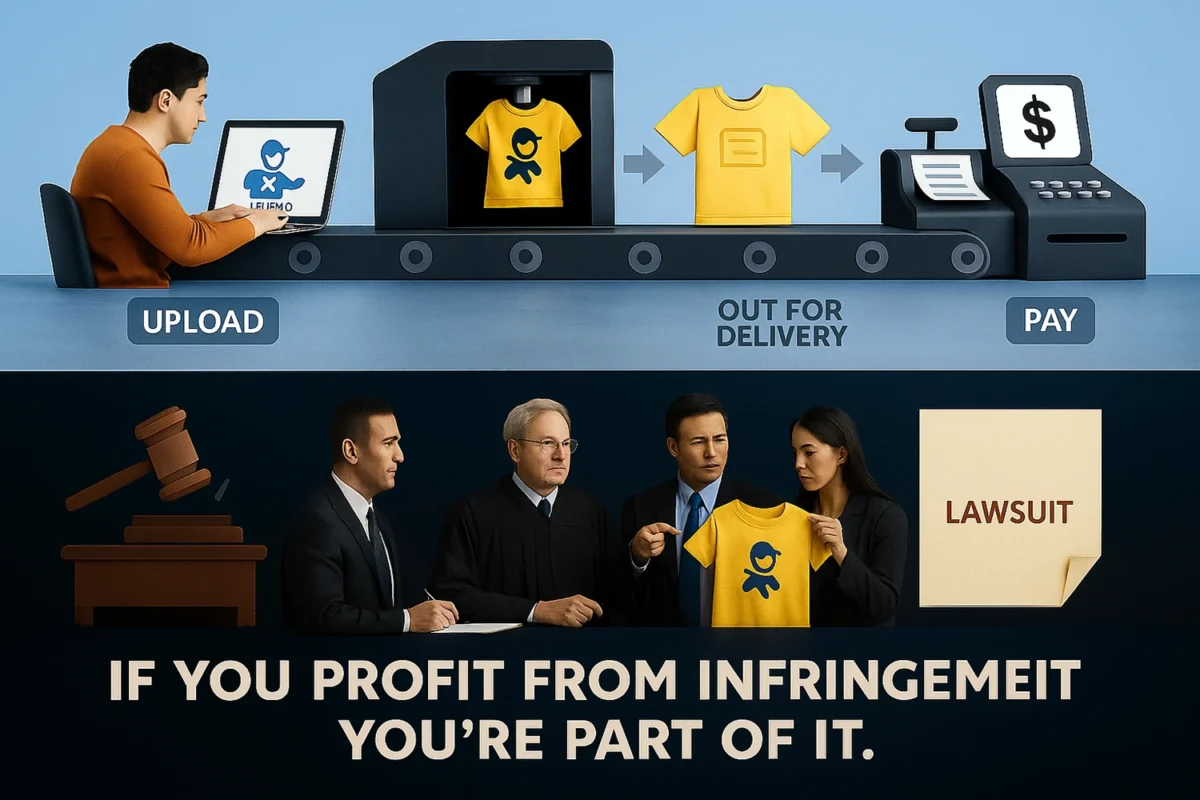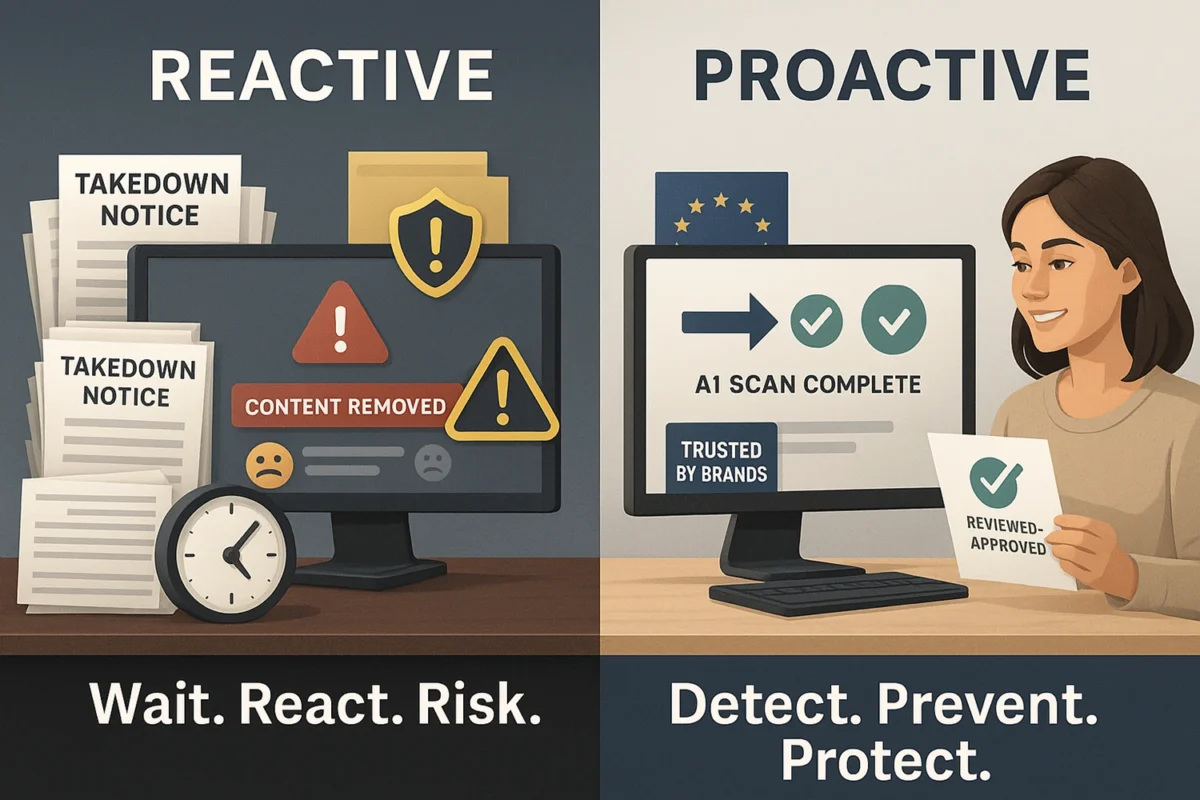DMCA 101: How the Safe Harbor Works for Platforms
If your platform hosts user-generated content (UGC), enables creators to upload artwork, or allows custom product design, you’ve probably heard about the DMCA Safe Harbor.
But what is it really?
And how much protection does it offer?
This guide breaks down what the Digital Millennium Copyright Act (DMCA) means for platforms—and why it’s not the legal shield many think it is.
1. What Is The DMCA-And What Was It Designed to Do?
The Digital Millennium Copyright Act (DMCA) is a U.S. law passed in 1998. Its core goal:
To balance the protection of copyright holders with the growth of the internet and online platforms.
It introduced two major ideas:
- Making it easier for rights holders to remove infringing content online
- Creating a legal “Safe Harbor” for platforms that follow the rules
In short: The DMCA allows platforms to avoid liability if they respond properly to infringement claims.
2. Safe Harbor Basics
Safe Harbor is a legal immunity that protects platforms from being held liable for copyright-infringing content uploaded by users—as long as the platform meets specific requirements.
To qualify:
- You must be a service provider (host, ISP, marketplace, etc.)
- You must not have actual knowledge of infringement
- Upon learning of infringement, you must act expeditiously to remove it
- You must have a repeat infringer policy
- You must not financially benefit from infringing content if you can control it
It’s not automatic. You must show that your platform operates in good faith—and takes action when issues arise.
3. Notice-And-Takedown: How to Handle Complaints
The DMCA introduced a formal process for handling copyright complaints:
Step-by-step:
- Rights holder submits a notice of claimed infringement to your platform.
- Your platform must remove or disable access to the content promptly.
- You notify the uploader and allow them to file a counter-notice.
- If a valid counter-notice is submitted, and the rights holder does not sue within 10–14 business days, the content may be restored.
Platforms must follow this process carefully to stay protected. Even small mistakes—like delays or improper notification—can jeopardize Safe Harbor.
4. Registering A DMCA Agent: The Step Everyone Forgets
To qualify for Safe Harbor in the U.S., your platform must designate and register a DMCA agent with the U.S. Copyright Office.
This is:
- A public point of contact for copyright complaints
- Required by law
- Easy to verify (brands will check this before filing lawsuits)
No registered agent = no Safe Harbor, even if you follow the takedown process.
5. Is Safe Harbor Bulletproof?
No—and that’s where platforms often get into trouble.
The DMCA Safe Harbor protects you from damages related to user-uploaded copyright infringement if you meet all the criteria.
But it does not protect you from:
- Trademark claims (DMCA covers only copyright)
- Design rights infringement
- Injunctions or court orders
- Loss of payment processing, app store access, or platform partnerships
- “Willful blindness” (if a court finds you ignored red flags)
Think of Safe Harbor as a minimum defense—not a full suit of armor.
Follow The Rules, But Don’t Stop There
The DMCA Safe Harbor gives platforms a legal foundation—but it’s not a free pass. It won’t help if you ignore red flags, skip the agent registration, or rely solely on user reports.
To truly protect your platform:
- Follow the DMCA takedown process
- Register a DMCA agent
- Implement a repeat infringer policy
- Use proactive tools like VISUA’s Infringio to catch infringement before it spreads
Platforms that go beyond compliance are the ones that survive growth—and scrutiny.
Not sure if your platform qualifies for Safe Harbor?
Want to automate pre-upload detection to go beyond it?
Want to see how Infringio helps detect IP issues before they go live? Book a demo with VISUA today.
Disclaimer: Not Legal Advice
This content is provided for informational purposes only and does not constitute legal or professional advice. The information reflects our understanding as of the date of publication and may not apply to every situation or jurisdiction. You should consult qualified legal counsel for advice tailored to your specific circumstances. Any actions taken based on this content are at your own risk. Neither VISUA nor its affiliates accept liability for any losses or damages arising from the use of this information.
Book A DemoRELATED
Redbubble, Teespring, and the Lessons of IP Enforcement Failures
Reading Time: 3 minutesPrint-on-demand (POD) platforms empower creators to design and sell products without holding inventory. But with that power…
BlogHow AI Is Changing the Game in IP Enforcement
Reading Time: 2 minutesIP enforcement used to be simple: But today’s infringement landscape – especially for POD and UGC-heavy platforms…
BlogThe Future of IP Compliance – Proactive vs. Reactive Models
Reading Time: 2 minutesFor years, most platforms treated IP compliance as a reactive function: But the market – and the…
Blog


